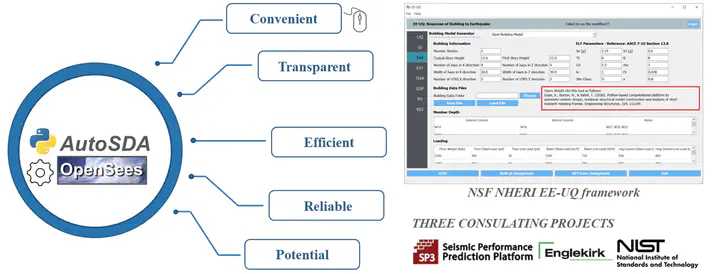Python-based computational platform to automate seismic design, nonlinear structural model construction and analysis of steel moment resisting frames
 AutoSDA
AutoSDA
Abstract
An end-to-end computational platform is presented, which automates seismic design, nonlinear structural model construction, and response simulation (static and dynamic) of steel moment resisting frames. A modular framework is adopted along with the object-oriented programming paradigm to ensure the adaptability of the platform. The seismic design module iteratively generates code-conforming section sizes and detailing for beams, columns, and beam-column connections based on the relevant input design variables including the building configuration (e.g., the number of stories, the number of lateral-force resisting systems, and the building dimensions), loads (e.g., dead and live loads on each floor), and site conditions (mapped spectral acceleration parameters). The nonlinear model construction and analysis module takes the design results as input and produces structural models that capture flexural strength and stiffness deterioration in the frame beam-column elements, and performs pushover and response history analyses. Illustrative examples are presented to demonstrate the reliability, accuracy, and efficiency of the platform, which significantly reduces the time and effort involved in producing iterative structural designs and conducting nonlinear analyses, both of which are necessary for performance-based seismic design. Additionally, the platform can be used to create an extensive database of archetype steel moment frame buildings towards the development of analytics-driven design methods.